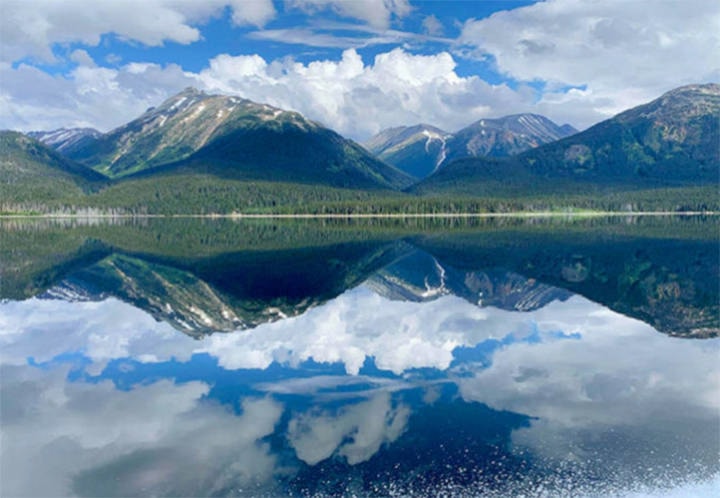The Rio Tinto Water Engagement Initiative (WEI) is investigating the depletion of fish populations and spawning habitat in the Nechako Reservoir in response to concerns brought up by Southside resident Gary Blackwell.
Blackwell initially wrote to Rio Tinto WEI, in regards to the depletion of the fish population in Tahtsa Reach and Tahtsa Lake. He also wrote to the Village of Burns Lake for support.Blackwell, who has lived on the Nechako Watershed since he was born in 1952, outlined in the letter that Blue Creek on Tahtsa Lake was a favourite spot to go fishing, and that the Nechako Reservoir was a perfect spawning ground for kokanee salmon. Though in the last 15 years, he hasn’t caught a fish, and never sees schools of kokanee salmon despite spending many hours trolling the lake.
Blackwell went on to write that he thought the issue my be caused by the Kemano tunnel, which is situated at the very west of Tahtsa Lake. He stated that there is a strong current that runs West through the lake to where the water is drawn through the tunnel to the turbines at Kemano, and that he believed a study should be conducted on how many fish are being drawn into the tunnel.
Blackwell said in the letter that he had brought this issue up at various WEI meetings and no action had taken place.
Mayor Dolores B. Funk also wrote to Rio Tinto in support of Blackwell, urging them to respond to his letter. Funk stated that members of the council took the opportunity to discuss the issues raised, and came to the conclusion that they lack information specific to decreasing fish populations in and around the reservoir.
Since then, Rio Tinto WEI has begun working with Blackwell to address the issue.
“Relevant to Blackwell’s questions, the Technical Working Group and its environmental consultants have been reviewing existing fisheries information and scientific studies to better understand fish populations in the Nechako Reservoir. This review has included meeting with Provincial fisheries biologists to ensure their relevant information and knowledge is considered. Then, in early May 2021, Rio Tinto met with Blackwell via webcam to discuss what he has learned over his decades of experience on the reservoir, and captured observations like spawning locations and fishing success. This important information is now included in our collective knowledge of reservoir fisheries,” a Rio Tinto spokesperson told Lakes District News.
The spokesperson went on to say that Rio Tinto WEI has planned a field trip with Blackwell this fall to see the reservoir first hand and better understand his concerns.
“We are happy to continue working with him and other participants in the WEI,” they said. “Along with information gathering, the WEI is specifically studying several reservoir fish questions. We are assessing nutrients and food supply, as well as the likelihood of fish being entrained down the Kemano water intake or over the Skins Lake spillway. The original assessment completed found that the likelihood of fish being swept down the Kemano water intake was low. As we continue to learn about these and other aspects, we will also be identifying data gaps, and conducting further scientific studies to collect missing information and to monitor changes over time.”
